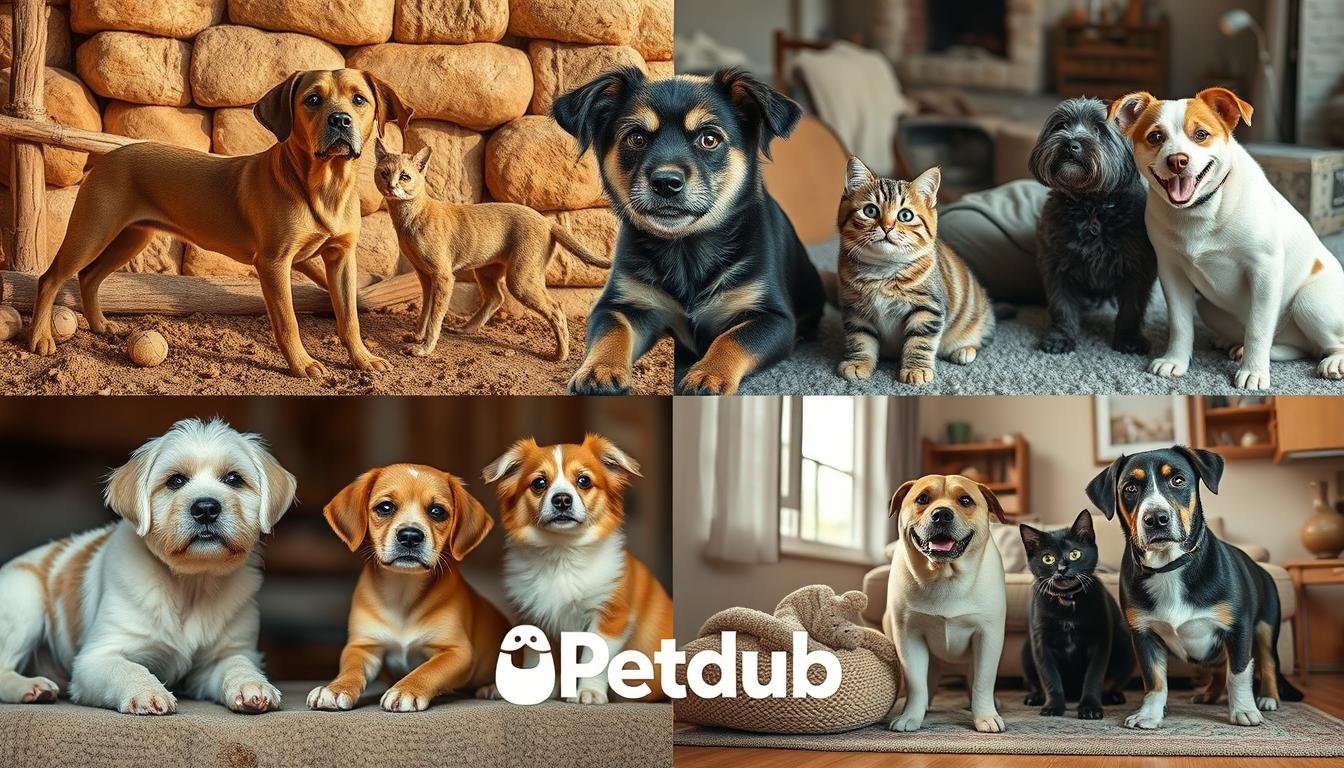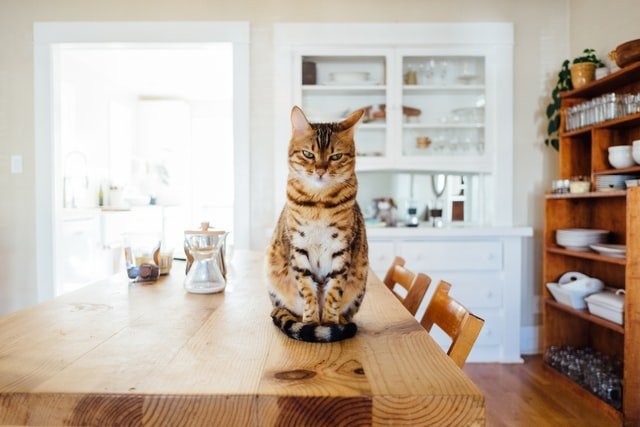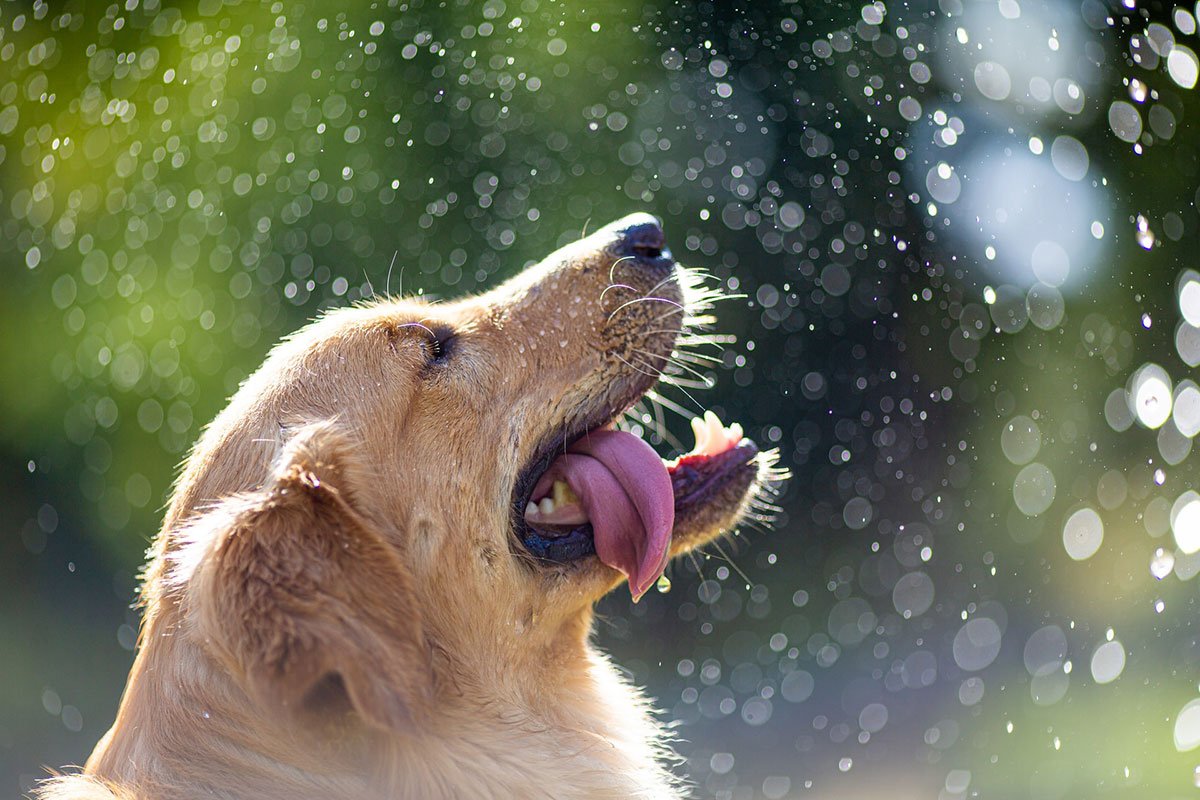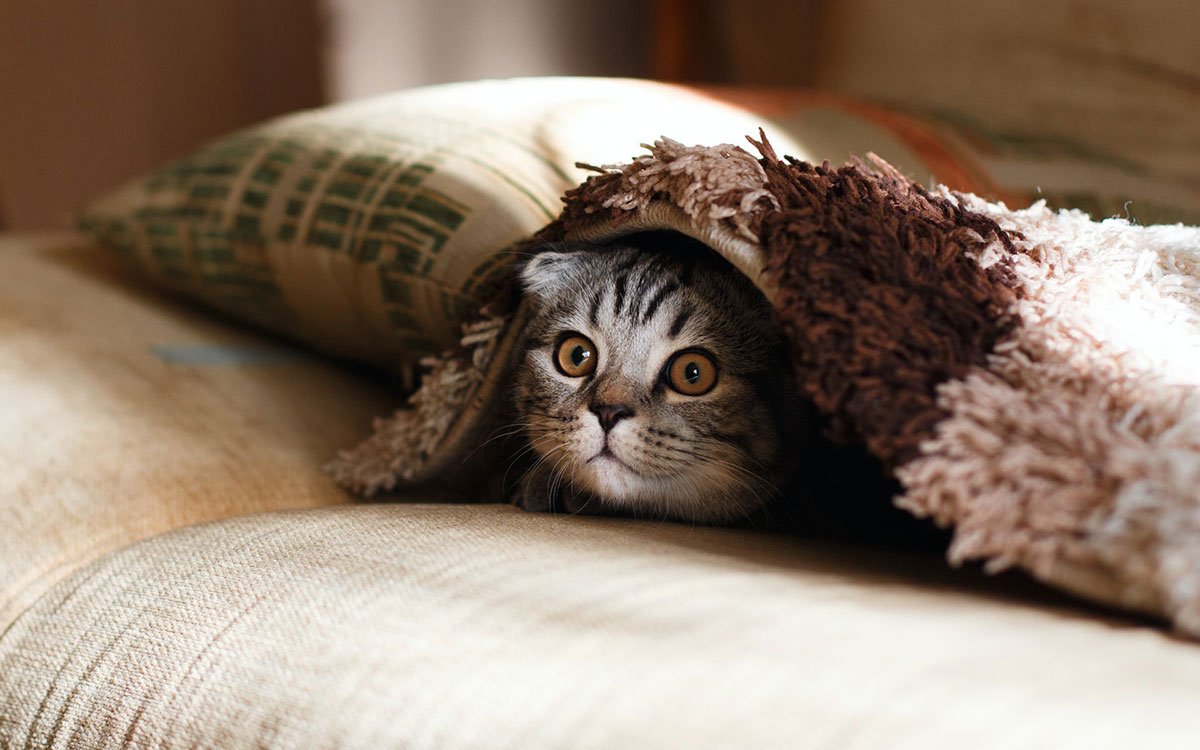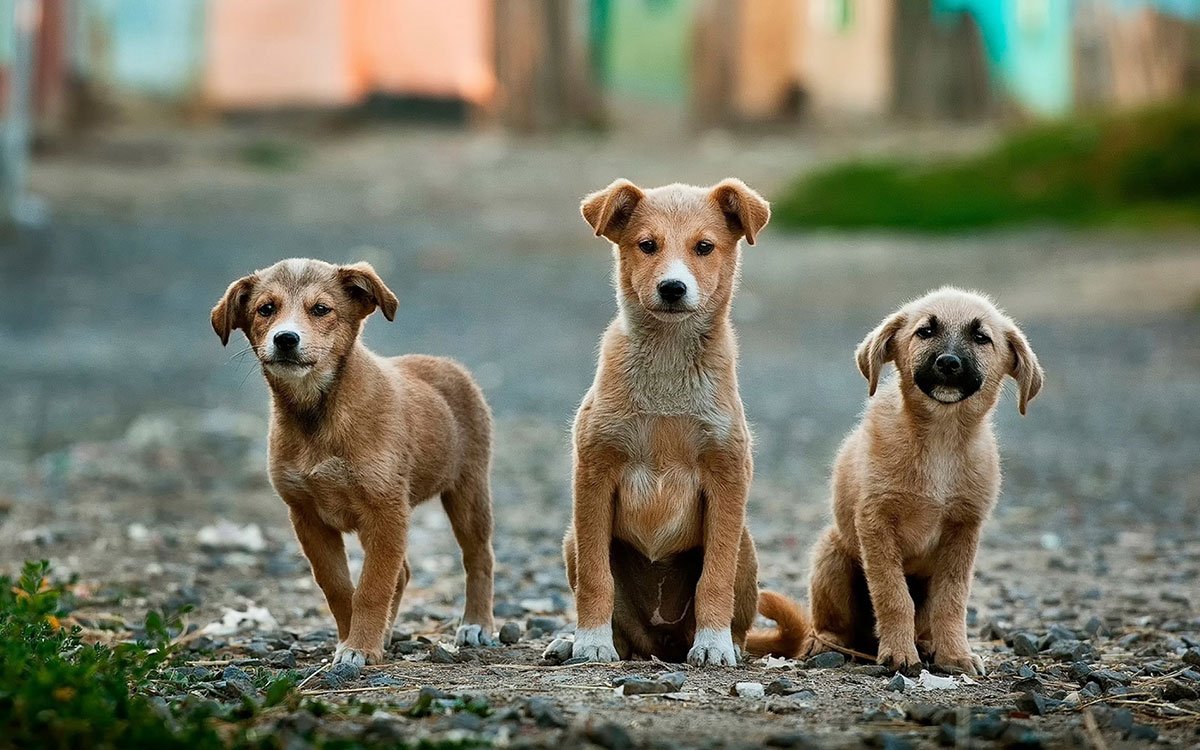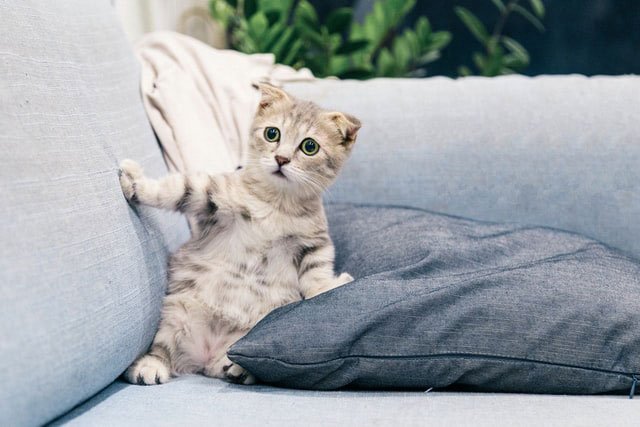“The greatness of a nation and its moral progress can be judged by the way its animals are treated.” – Mahatma Gandhi
Mahatma Gandhi’s words highlight the importance of pets in our lives. From ancient times to today, humans and pets have shared a special bond. This bond has shaped our societies in many ways. Let’s explore the history of pets and their role in our lives.
Our love for pets comes from a long history. The short history of pets, the pet ownership timeline, and the origins of modern pet-keeping show a rich story. We’ll look at how animals were first domesticated and how they became our friends. We’ll also see how pets have been a big part of our lives for centuries.
Key Takeaways
- Pets have a rich and diverse history, dating back to ancient civilizations.
- The domestication of animals was a crucial step in the evolution of pet-keeping.
- Pets have held cultural significance and emotional importance throughout human history.
- The popularity of pet ownership has ebbed and flowed over time, reflecting societal changes.
- The future of pet-keeping promises new trends and innovations that will shape the human-pet relationship.
Exploring the Origins of Human-Pet Relationships
The bond between humans and their pets has a long history. It goes back to the earliest civilizations. As we explore this bond, we find a rich mix of cultural traditions and the story of animal domestication.
Ancient Civilizations and Their Beloved Companions
In ancient Egypt, people revered majestic felines. In China, loyal canines walked alongside the rulers. These animals were more than pets; they held sacred or symbolic meanings in their cultures.
The archaeological record shows evidence of pet burials. This suggests a deep emotional bond and importance of these ancient pets.
The Domestication Process: From Wild to Tamed
The evolution of human-pet relationships came from domesticating animals. Through selective breeding and forming bonds, wild creatures became domesticated companions. This changed their relationship with humans forever.
The domestication of dogs, cats, and other animals was key. Our ancestors saw the practical and emotional benefits of having these ancient pets by their side.
Exploring the origins of human-pet relationships reveals a rich tapestry. It shows the cultural impact of pets and the evolution of human-pet relationships that have shaped our world. From ancient Egypt’s felines to China’s loyal canines, animal domestication has deeply influenced our bond with pets.
Cultural Significance of Pets Throughout History
Pets have always been important in culture, influencing art, literature, and how we live. From ancient times to today, pets have shaped our views and interactions with them.
In history, some pets became symbols of their times and places. Ancient Egyptians saw cats as sacred, mummifying them and building temples for them. In ancient China, pugs and Shih Tzus showed wealth and status.
| Famous Historical Pets | Cultural Significance |
|---|---|
| Greyfriars Bobby (19th century Scotland) | Loyal Skye Terrier who guarded his owner’s grave for 14 years, becoming a symbol of unwavering devotion |
| Laika (Soviet space dog, 1957) | First animal to orbit the Earth, paving the way for human spaceflight and captivating the world’s imagination |
| Slinky Dog (1940s-1950s) | Iconic toy that became a beloved children’s plaything, representing the playful spirit of pets |
Pets have also been a big part of art and literature. From cave paintings to books, pets have inspired and connected us deeply.
Looking at the history of pets shows how they’ve shaped our world and our lives. It’s a story of love, loyalty, and companionship.
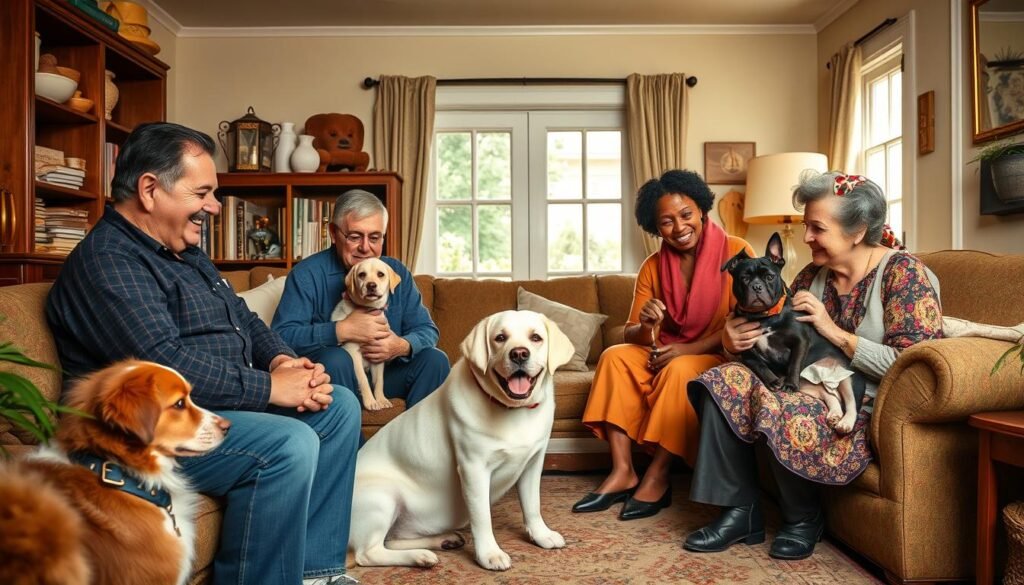
“The greatest pleasure of a dog is that you may make a fool of yourself with him, and not only will he not scold you, but he will make a fool of himself too.” – Samuel Butler
Short history of pets
The history of pets is a fascinating story. It shows how humans and animals have connected over time. From ancient times to today, pets have played many roles in our lives.
Tracing the Roots of Pet Ownership
Humans first kept animals for food, work, or protection. But soon, some animals became more than just tools. Ancient Egyptians, Greeks, and Romans kept pets like cats, dogs, birds, and even monkeys.
Evolution of Pet Breeds and Species
As societies grew, so did the variety of pets. Breeders created many different animals, each with special traits. Today, we have everything from fast greyhounds to cuddly Persian cats.
| Era | Dominant Pet Species | Notable Breed Developments |
|---|---|---|
| Ancient Civilizations | Cats, dogs, birds | Early domestication of dogs and cats |
| Middle Ages | Horses, falcons, small mammals | Emergence of specialized hunting breeds |
| Renaissance Period | Lap dogs, exotic birds | Popularity of small, companion dog breeds |
| Modern Times | Diverse range of species | Extensive breed development and diversification |
The history of pets shows our deep connection with nature. It tells the story of how humans and animals have come together. This story is still growing, showing the deep bond we share with our pets.
The Rise of Dedicated Pet Ownership
Our society has changed a lot, and so has the role of pets. Pets are no longer just working animals or status symbols. Now, they are seen as beloved family members. This change in how we view pets has led to more dedicated pet ownership.
Changing Attitudes and Societal Norms
We’ve seen a big change in how we see and interact with pets. The way humans and pets relate has changed due to many factors. These include:
- Increased urbanization and the need for companionship in smaller living spaces
- Greater awareness of the emotional and psychological benefits of pet ownership
- Shifting cultural norms that place a higher value on the well-being of pets
- The growing trend of treating pets as integral members of the family
These changes have led to more people and families caring deeply for their pets. Pets are now seen as more than just possessions. They are cherished companions, showing the strong emotional bonds between humans and animals.
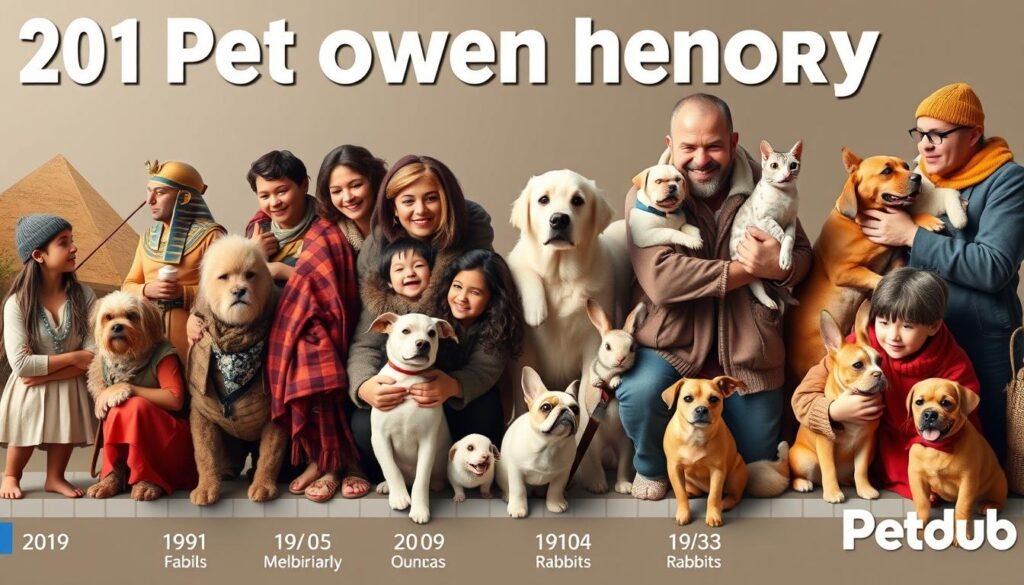
“Pets have become an integral part of our lives, shifting from mere working animals to beloved family members. This transformation in societal norms has paved the way for the rise of dedicated pet ownership.”
As the evolution of human-pet relationships keeps going, we’ll see more ways to celebrate pet companionship. The changing attitudes towards pets have made dedicated pet ownership more popular and important in our society.
Famous Historical Pets and Their Legacies
History is filled with pets that went beyond being just pets. They left a mark on our collective memory. These pets have shown us the deep connection between humans and animals.
Rin Tin Tin, a German Shepherd, became a star in the early 1900s. Found as a puppy during World War I, he became famous in movies. His story made the German Shepherd popular and showed the strong bond between humans and dogs.
Balto, a Siberian Husky, led a team of sled dogs in 1925. They brought diphtheria serum to Nome, Alaska. His journey inspired books, films, and a statue in New York City’s Central Park. He became a symbol of the human-animal bond.
| Pet | Historical Significance | Legacy |
|---|---|---|
| Rin Tin Tin | German Shepherd dog who became a Hollywood star in the early 20th century | Popularized the German Shepherd breed and demonstrated the enduring bond between humans and their canine companions |
| Balto | Siberian Husky who led a team of sled dogs to deliver life-saving diphtheria serum to Nome, Alaska, in 1925 | Inspired books, films, and a statue in New York City’s Central Park, cementing his place as a true icon of the human-animal bond |
These pets are just a few examples of many that have touched our hearts. By learning about them, we appreciate the role pets have played in history. They continue to impact our lives in meaningful ways.
Pets as Companions: The Emotional Bond
Our relationships with pets are more than just ownership. They offer us a deep emotional connection. This bond is both profound and fulfilling. It’s rooted in the psychology of human-pet relationships, a field that reveals the significant impact pets have on our well-being.
The Psychology Behind Human-Pet Relationships
Pets give us companionship, comfort, and unconditional love. This can change our lives. Studies show that pets make us feel trust, empathy, and attachment. This bond can reduce stress, anxiety, and improve our mental health.
For many, pets are part of the family. They bring joy, laughter, and support in both good and bad times. Pets offer comfort and acceptance, especially when we’re lonely, sick, or grieving. They provide stability and unconditional love.
“Pets have a way of finding the people who need them, and filling an emptiness we didn’t even know we had.” – Thrift Books
The psychology of human-pet relationships shows how much pets impact our lives. They enrich our lives with companionship, comfort, and a deeper connection to nature.
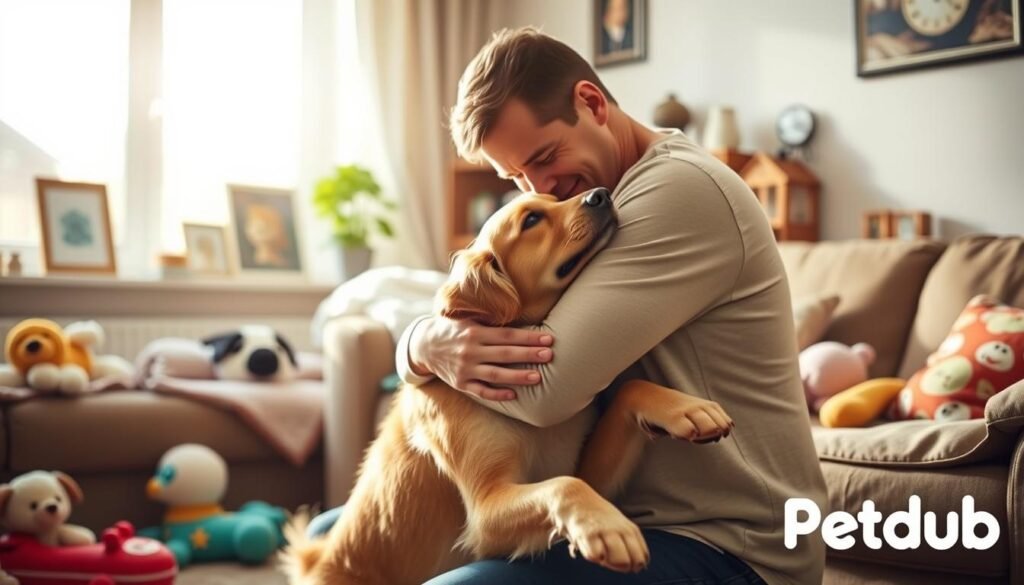
The Global Impact of Pet Popularity
Pet ownership has grown worldwide, affecting global industries and services. The rise of pet-related businesses shows the economic and social impact of the growing pet market.
Pet-Related Industries and Services
The growing love for pets has led to new industries and services. These include:
- Veterinary care: The demand for top-notch veterinary services has increased. This is due to better animal healthcare and the rise of specialized clinics.
- Grooming and pet spas: Pet grooming services, salons, and spa treatments are now popular. They cater to the desire to pamper our pets.
- Pet food and supplies: The pet food industry has grown, focusing on nutritious and tailored options for different pets.
- Pet accessories and apparel: The market for pet accessories, like toys, beds, and fashionable clothes, has expanded. This shows how pets are seen as part of the family.
- Pet-sitting and boarding: New businesses offer pet-sitting, boarding, and daycare services. They help pet owners when they are away.
These industries have created jobs and boosted the global economy. They show the wide impact of pets becoming more popular.
| Pet-Related Industry | Global Market Size (2021) | Projected Growth (2022-2027) |
|---|---|---|
| Pet Food and Supplies | $150 billion | 7.8% CAGR |
| Veterinary Care | $125 billion | 6.2% CAGR |
| Pet Grooming and Boarding | $55 billion | 5.4% CAGR |
The global impact of pet popularity is clear. Pet-related industries and services are key in shaping the world’s economy and society.
Responsible Pet Ownership: Past and Present
The journey of human-pet relationships is fascinating. It shows how our views on pets have changed. Now, we focus more on caring for them properly.
In the past, pets were seen as mere possessions. But today, we treat them as living beings that need love and care. This change is key to responsible pet ownership.
- Now, we know pets need the right food, exercise, and vet visits.
- Spaying and neutering pets is common to stop overpopulation.
- Choosing pets wisely and giving them a good home is important.
The more people own pets has led to new industries. This shows how serious we are about caring for pets. From food to insurance, the cost of pet care has gone up.
| Responsible Pet Ownership Practices | Benefits |
|---|---|
| Providing proper nutrition, exercise, and veterinary care | Ensures the health and well-being of the pet |
| Spaying and neutering pets | Helps reduce pet overpopulation and abandoned animals |
| Ethical breeding and avoiding impulse purchases | Promotes the responsible acquisition of pets |
| Creating a loving, enriched environment | Supports the emotional and social needs of pets |
Looking at how human-pet relationships have evolved, we see that caring for pets is essential. It’s not just a trend. It’s about making sure pets are happy and well-cared for. By following these practices, we can make a better future for pets and ourselves.
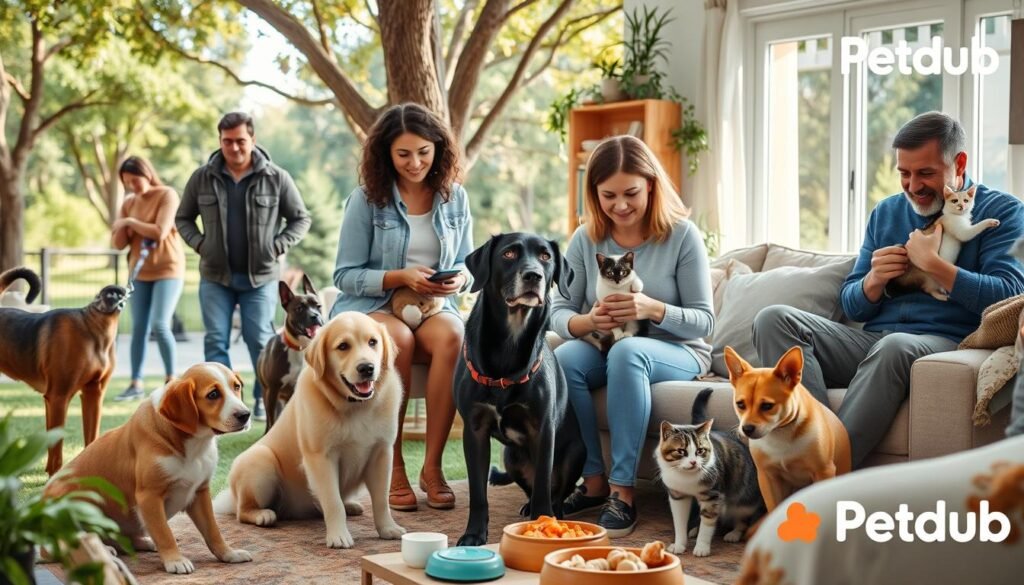
The Future of Pet Keeping
Looking ahead, the future of pet keeping is filled with new trends and breakthroughs. Veterinary care is getting better, and pets are playing a bigger role in our lives. The world of pet ownership is set for big changes.
Emerging Trends in Pet Ownership
Smart technology for pets is becoming more popular. Wearable devices track pets’ health and activity. Automated pet feeders and intelligent litter boxes are also changing pet care. These tools make caring for pets easier and give us insights into their needs.
The humanization of pets is also a big trend. Pets are now seen as part of the family, with their own likes and dislikes. This has led to a big demand for high-quality pet products, like gourmet pet foods and personalized pet accessories.
| Emerging Trend | Description |
|---|---|
| Smart Technology | Wearable devices, automated feeders, and intelligent litter boxes that enhance pet care and provide valuable insights. |
| Humanization of Pets | Pets are increasingly seen as family members, leading to a demand for premium pet products and services. |
| Sustainability and Eco-Friendly Pet Keeping | The rise in environmentally conscious pet owners seeking sustainable pet care solutions and products. |
| Personalized Pet Care | Tailored veterinary services, pet grooming, and training programs catering to the unique needs of individual pets. |
In the future, we’ll see better veterinary care and more sustainable and eco-friendly pet products. There will also be a bigger need for personalized pet services. These changes will make caring for pets even better, creating a brighter future for pets and their owners.
Exploring the Benefits of Pet Ownership
Owning a pet can make our lives richer in many ways. From the emotional bond we share with them to the real benefits, pets change our lives. They improve our physical, mental, and social health.
Pets offer emotional support that’s hard to find elsewhere. Studies show they help us feel less lonely, more confident, and give us a sense of purpose. They provide comfort, companionship, and unconditional love, helping us through tough times.
Pets also boost our physical health. Activities like walking and playing help us stay fit and manage our weight. They can lower blood pressure, reduce stress, and even strengthen our immune system.
| Benefit | Description |
|---|---|
| Emotional Support | Pets can provide companionship, reduce feelings of loneliness, and improve mental well-being. |
| Physical Health | Owning a pet can lead to increased physical activity, improved cardiovascular health, and a stronger immune system. |
| Social Connections | Pets can facilitate social interactions, helping their owners meet new people and build stronger community ties. |
Pets also improve our social lives. They help us meet new people and strengthen community bonds. Activities like walks or play dates create a sense of belonging and shared experiences.
“Pets have a way of finding the people who need them, and filling an emptiness we didn’t even know we had.” – Thom Jones
This research shows the many benefits of pet ownership. By building a strong emotional bond with our pets, we gain physical, mental, and social advantages. These benefits improve our overall quality of life.
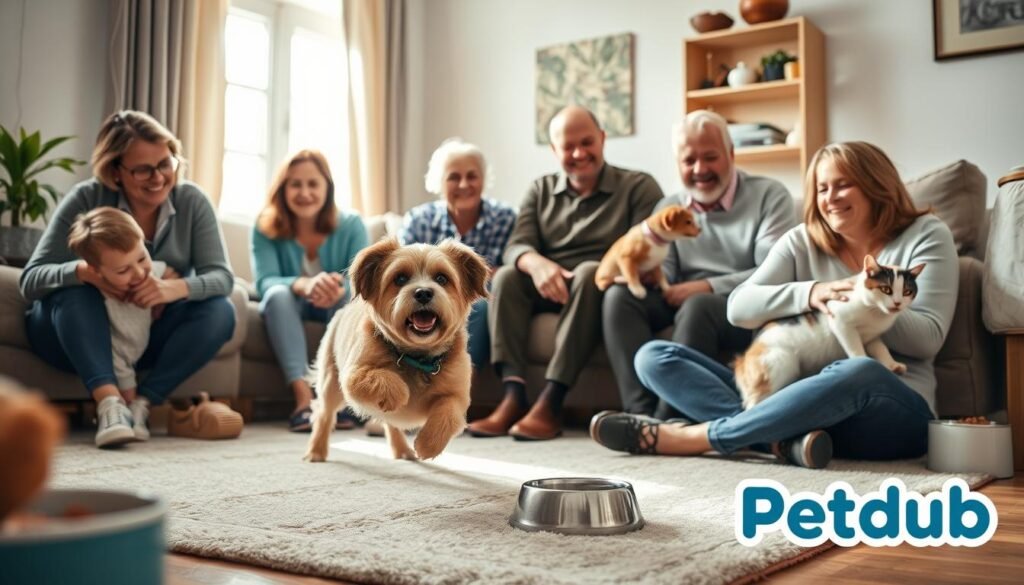
Cultural Diversity in Pet Preferences
Pets have a big impact on cultures worldwide. Different places have their own favorite pets, showing how animals are part of human lives. These choices are influenced by where people live, their beliefs, and old customs.
Exploring Regional Pet Trends
In some areas, like parts of Asia, people have kept pets like koi fish and crickets for centuries. This shows their cultural values. In other places, like areas with lots of farms, animals like horses and chickens are both pets and helpers.
Dogs are seen differently in different cultures. In some places, they’re seen as loyal friends. In others, they’re not considered clean. Keeping exotic pets, like big cats, is okay in some places but not in others.
| Region | Traditional Pet Preferences | Cultural Significance |
|---|---|---|
| Asia | Koi fish, crickets, fighting fish | Reflect cultural values and beliefs |
| Agricultural Regions | Horses, goats, chickens | Valued as both companions and working animals |
| Varying Perceptions of Dogs | Loyal protectors or considered unclean | Influenced by cultural norms and beliefs |
| Exotic Pet Ownership | Big cats, venomous snakes | Widely accepted in some regions, restricted in others |
These differences show how pets are a big part of many cultures. They show how animals are important in our lives, all over the world.
The Role of Pets in Literature and Art
For centuries, pets have inspired artists, writers, and creators. They have been part of human expression and culture. From cave paintings to today’s art, pets have played a big role.
Pets have captured readers’ hearts in literature. They show loyalty, playfulness, and deep emotional bonds with humans. Works like Ernest Hemingway’s “The Snows of Kilimanjaro” and T.S. Eliot’s “Old Possum’s Book of Practical Cats” feature pets.
In the visual arts, pets have also made a mark. Artists like Frida Kahlo and Vincent van Gogh have included pets in their work. Sculptors like Beniamino Bufano have made stunning animal-themed pieces. Even in animation, pets like Slinky Dog and Dug have won fans around the world.
“Dogs are not our whole life, but they make our lives whole.”- Roger Caras
Looking at pets in literature and art, we see their big impact on culture. From ancient Egypt to today’s social media, pets have influenced human creativity.
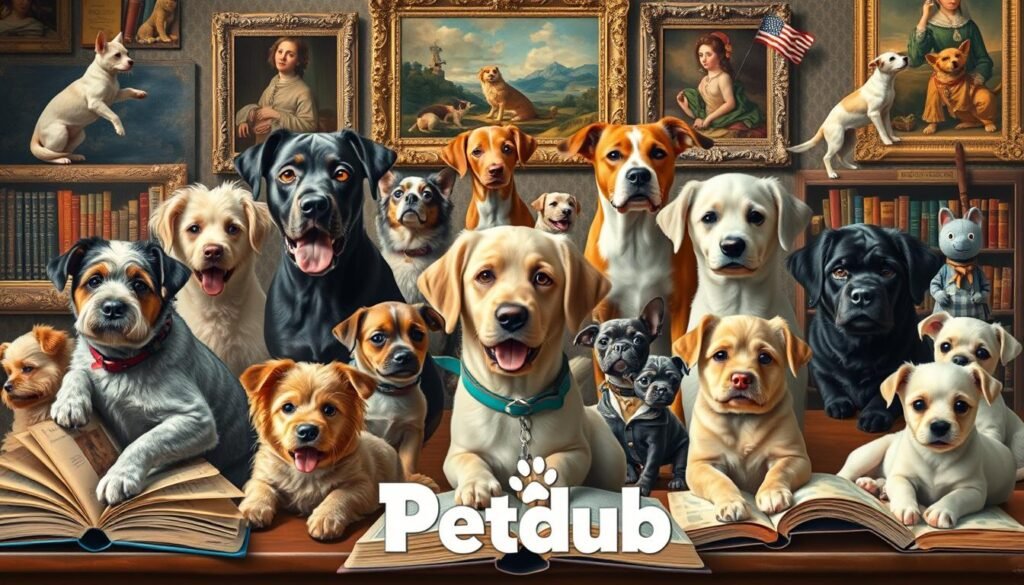
Preserving the Legacy of Pets
Looking ahead, it’s key to keep the legacy of pets alive. Their role in human history is huge. Efforts to document and conserve pet stories and traditions help us celebrate this bond for future generations.
Documenting Pet Histories
Worldwide, projects are underway to document pet histories. Museums and digital archives are collecting stories and artifacts. These efforts show how pets have changed our lives and cultures.
Conservation Efforts for Pets
There are also efforts to save pet-related items. Organizations work to protect artifacts and artworks. This way, we can honor the lasting impact pets have on us.
As pet ownership changes, we must value preserving pet legacies. Documenting their stories and supporting conservation helps keep their traditions alive. This way, we ensure their impact on our lives is remembered and cherished.
“The true legacy of pets lies in the indelible mark they leave on our hearts and the stories they inspire us to tell.”
https://petdub.com/animal-stories-for-children-to-read-or-listen-to/
Les Titanimals, free animal stories for children to read or listen to
Conclusion
We’ve explored the rich history of pets and how they’ve become a big part of our lives. From ancient times to today, pets have brought joy and companionship. They’ve shown us the strong bond between humans and animals.
Looking back at the short history of pets, we see a remarkable journey. Pets have changed our lives and how we see the world. They’ve made our experiences richer and more meaningful.
The future of pet keeping is exciting and full of new possibilities. With new trends and innovations, our relationship with pets will evolve. We’re sure that our bond with pets will grow stronger, making them an essential part of our families and communities.

